5 Ways For Improving Collaboration in Software Teams
Read More
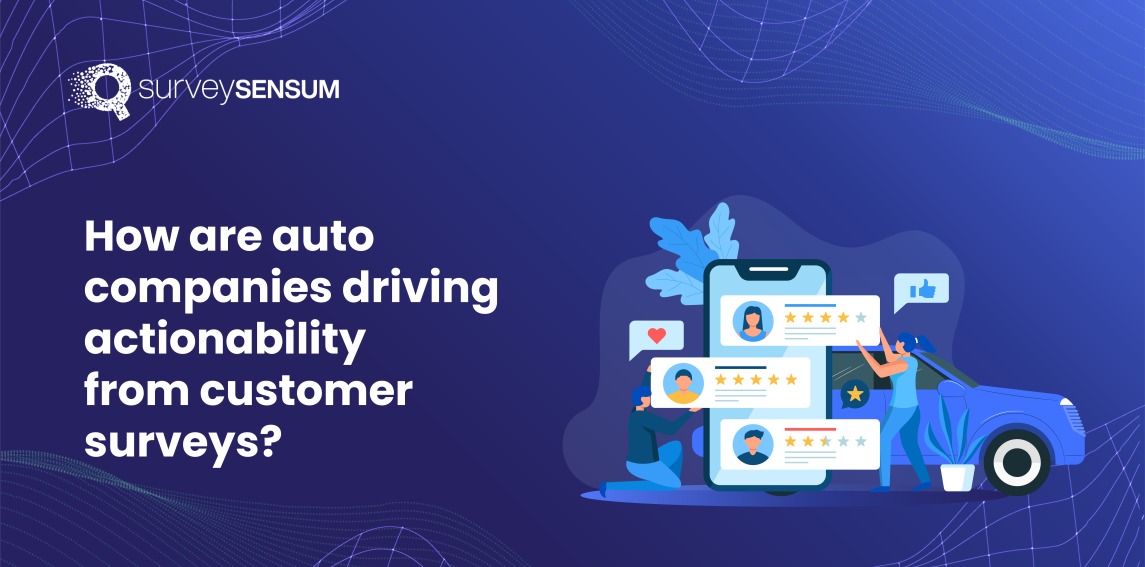
Automotive companies have invested billions of dollars to get eleahead of the competition, focusing on the quality of vehicles, features, design, performance, fuel potential, comfort, value for money, and many other attributes.
But they are NOT focusing on the other side of the coin – Customer Experience.
The customer experience of car buyers is as important as the quality of cars and their attributes. And while the entire industry is focusing on improving or offering the best and most innovative cars out there, only a handful are focusing on their customer experience.
Here’s a stat to emphasize the importance of the customer experience of car buyers.
There is a huge gap between consumer demands and OEM (Original Equipment Manufacturer) offerings.
That’s because automotive executives are more inclined toward future needs like electric vehicles, while consumers are getting annoyed with their day-to-day issues like service and maintenance.
And the lowest and unsaid priority of most OEMs and consumers is that they are not really concerned about loyalty.
This gap and disconnect between the OEMs and consumers have put the sales model at risk. And that’s why the OEMs need to focus on the customer experience of their customers across the automotive journey.
But, exactly how to offer a seamless experience across the automotive customer journey?
While the customer experience has become one of the determining factors for automotive customers, finding exactly where to focus across such an elaborate customer journey can be really challenging.
Since the automotive customer journey is the sum of dozens of discrete touchpoints, it is best to focus on each touchpoint and see which one requires the most attention.

Gather customer feedback from each touchpoint, identify the one where the customers are most unhappy, and work on enhancing the experience from there.
From gathering feedback to taking action on that feedback is another game altogether.
Create a Quick Automotive Customer Survey →Sign Up for Free
So, let’s talk about analyzing customer feedback and taking action on it.
Let’s take an example here.
Rhea recently went to get her car serviced. One of the major issues she was facing was that her driver seat’s door was making noise whenever she used to open it. She met with the manager there and explained it.
2 days passed and the car was delivered to her, but when she took it out for a drive, she noticed that the door’s noise wasn’t fixed.
How’d you think she felt at the moment?
Later, just after 2 hours, she received a survey asking for her feedback on the service, and in every detail, she shared her experience.
But what’s worst is she never heard from anyone, be it the support team or the service center.
That’s when she decided to get the car serviced by other local vendors…and well, the auto company lost its customer.
Rhea was happy with her car. Its features, make and model, and everything. But what ruined her experience was the fact that no one bothered about her feedback.
This has been the case for many.
That’s why gathering customer feedback at the right time is not enough. Acting on it is crucial as well.
And other than keeping customers happy, listening and acting no feedback in time also
The faster automotive companies focus on improving their customer’s experience, the faster they’ll start seeing greater revenue potential.
So, now we’ve established that listening to customer feedback is important. But, taking action on that feedback is a step ahead.
In the case of Rhea, the ideal way to take action on such feedback is, as soon as she shared her feedback,
This is called closing the inner loop.
As soon as the customer shares negative feedback, and the team has the ability or capacity to provide the solution and does that, that is called Closing the Inner Loop.
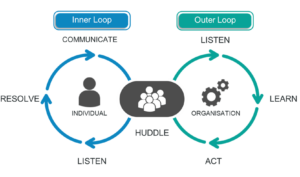
Quick question: How can we give a solution in time if we don’t hear about the problem in time?
And exactly for that, automotive companies need to gather real-time feedback using Pulse Survey Tools in order to resolve customer issues as soon as possible.
That’s why it’s time to go beyond phone surveys. Not only do customers don’t prefer to respond to unplanned calls, but the process of gathering feedback from a certain sample also takes days. And by the time the OEMs receive the feedback, it’s too late.
But if not phone surveys, then what’s the alternative? → ONLINE SURVEYS
With the entire world going digital, it’s time to take your surveys online too and be where your customers are.
Not only are customers more likely to share their feedback, but you will also receive feedback in real time.
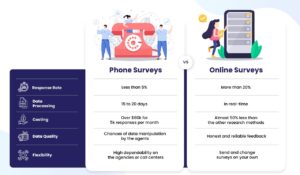
Online surveys not only give OEM real-time feedback, but they’ll also instantly notify the dealers of unhappy customers. So that they’ll be able to reach out to the customers and close the feedback loop in time.
How? – By integrating the feedback platform with the existing CRM
The only way to take action on the feedback in time is by getting alerted of it. That’s why it is imperative to integrate your current app/ CRM (that you use every day) with the feedback platform. This will not only alert you and everyone in the process of the feedback but will remind you to take the required action.
But that’s just one case. What happens when one agent or a dealer can not resolve the issue?
For example, when Rhea comes for the car service and the behavior of the staff had been pretty rude. And not just Rhea; many other customers have also complained about the same. That’s when the outer feedback loop comes into play.
When complaints like rude behavior of the staff, untrained sales agent, delay in the delivery of the car post service, and such pops up, these require the Network Dealership Department to step in, supervise it, and make sure to resolve such issues.
Basically, when the customers’ issues are not resolved by the team right then and there and require the intervention of the senior and changes in the processes, that’s called closing the Outer Feedback Loop.
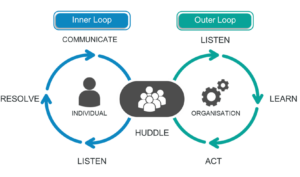
Here are a few instances that require the intervention of the dealership development or the change of process.
Instance 1:
How’d you book a slot/appointment for your car service?
You either call the service center or directly walk into the center. This is a standard way.
Now, if Rhea booked an appointment for 11 AM, and Ryan, another customer at the car service, walks in at 10:50 AM, who’d the service team prioritize?
That’s where the problems come in. Typically, the service team works on a first come first serve basis. So Ryan would be happy, but Rhea would be furious.
And now imagine what if Ryan’s car required the work of 7 hours and Rhea’s required only 1 hour?
Utter disappointment on Rhea’s behalf.
So to resolve this issue, many service centers have asked their customers to book the appointment over the app or call and not walk in directly. And not just that, they have stopped taking more than 5-6 cars per day (depending on their resources) in order to stay within the deadlines.
And yet, there are many customers who directly come into the center.
Queue Management is the kind of problem that requires the intervention of the dealership development team.
Instance 2:
Initially, we talked about Rhea’s car door problem. The car door was making noise whenever she closed/opened the door, and she informed the service team, and yet not been resolved.
This is one of the most common customer problems post their car’s service.
And yet, many automotive companies are failing to resolve this.
That’s why adding this question to your post-service surveys is always pertinent.
→ Did the issues you mentioned to the service team were resolved?
That’s the first step. The feedback needs to be shared with the concerned team so that required actions can be taken to make the customer happy.
Also, it should be made sure that when the customer comes with any of the problems, it should be resolved on priority and verified if it’s resolved before giving the car back!
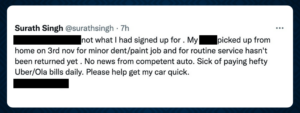
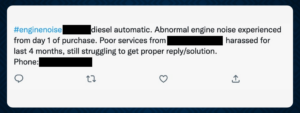
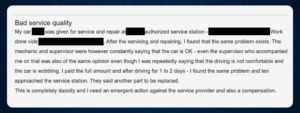

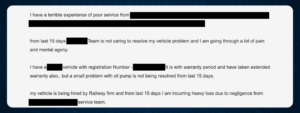
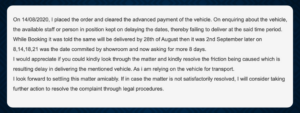
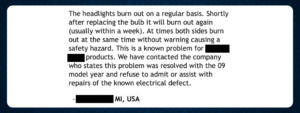
For instance, you have six dealerships in one city. And by analyzing the customer feedback, you recognize that people are not really happy with the test drive or the staff is being rude to the customers at a particular dealership.
Then share this information with that particular dealership and not with all 6 of them. Because doing so will make sure that they understand it is about them and ensures that it is taken care of as a priority.
Focusing on making customers happy is incredibly important. According to the McKinsey analysis, the revenue yielded from the recurring services could boost OEM’s revenue from car sales by 30% in the next decades.
And to achieve that, OEMs need to build relationships with their dealers, both old and new, and work closely with them.
